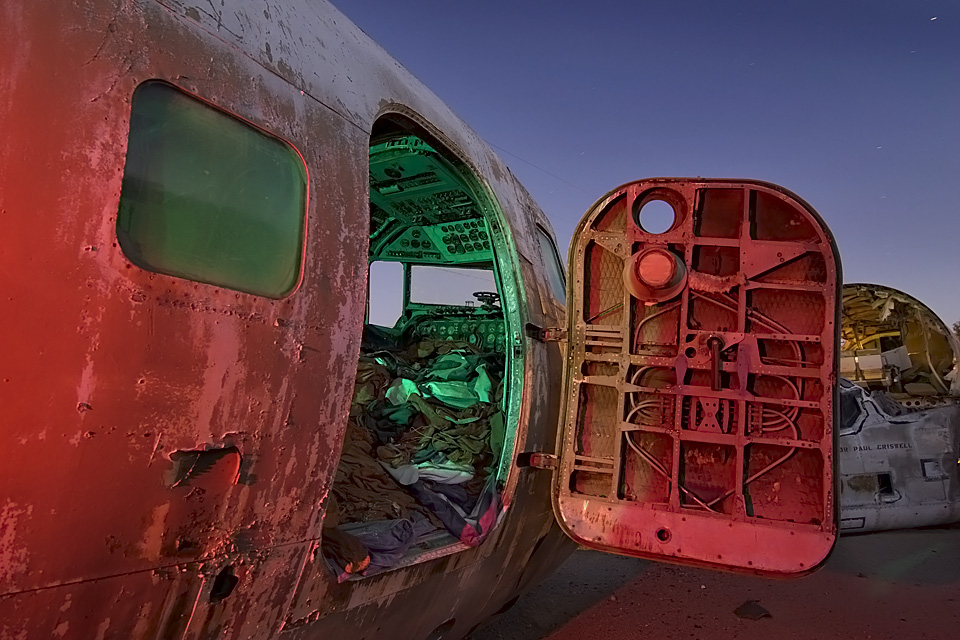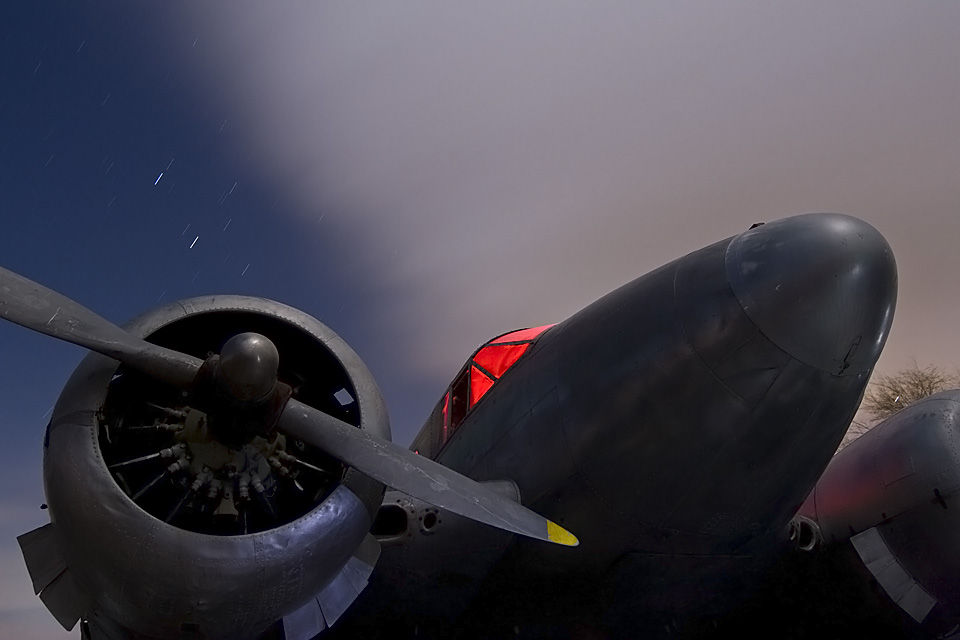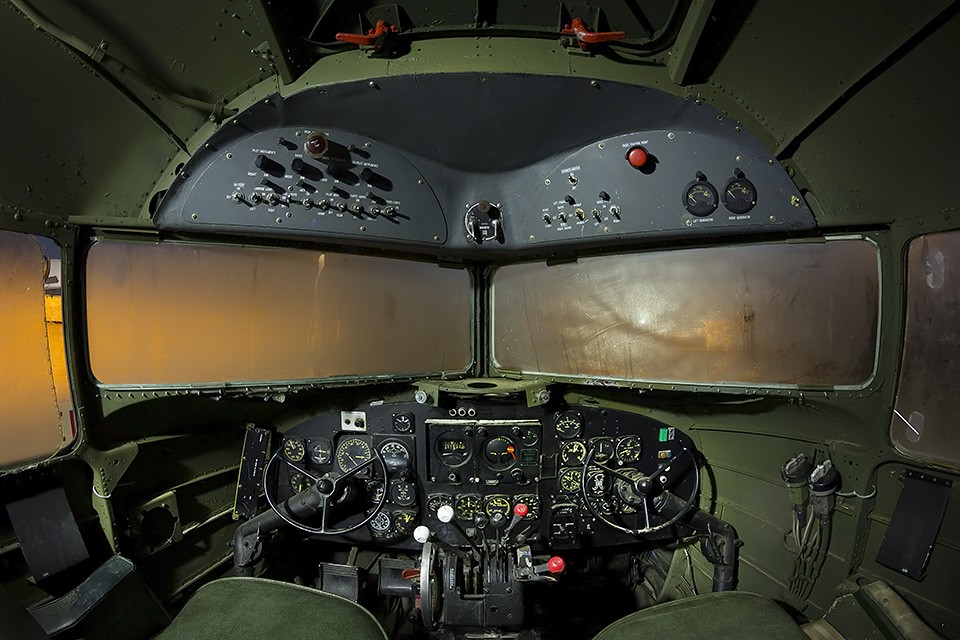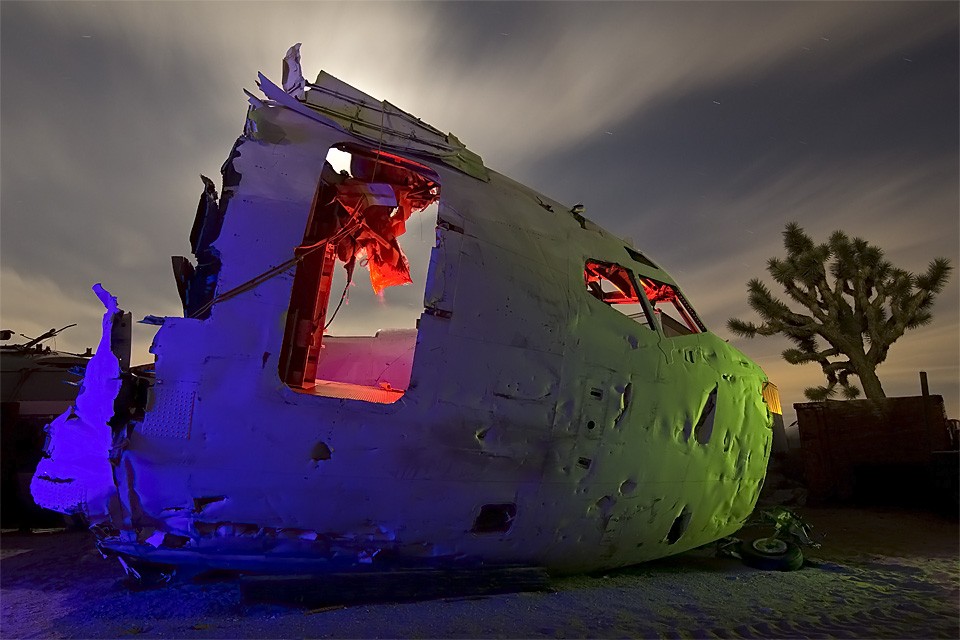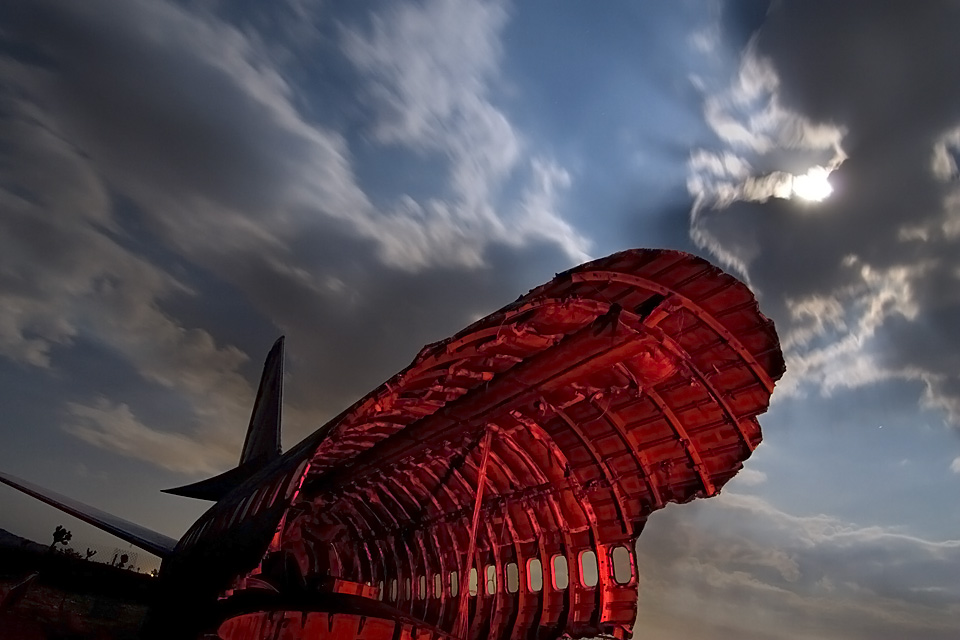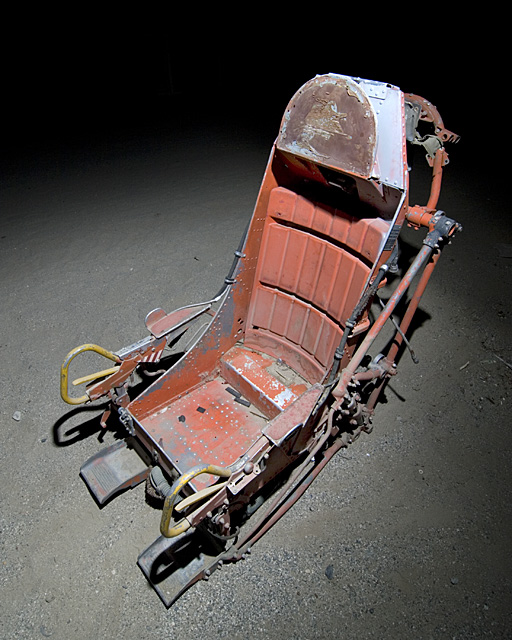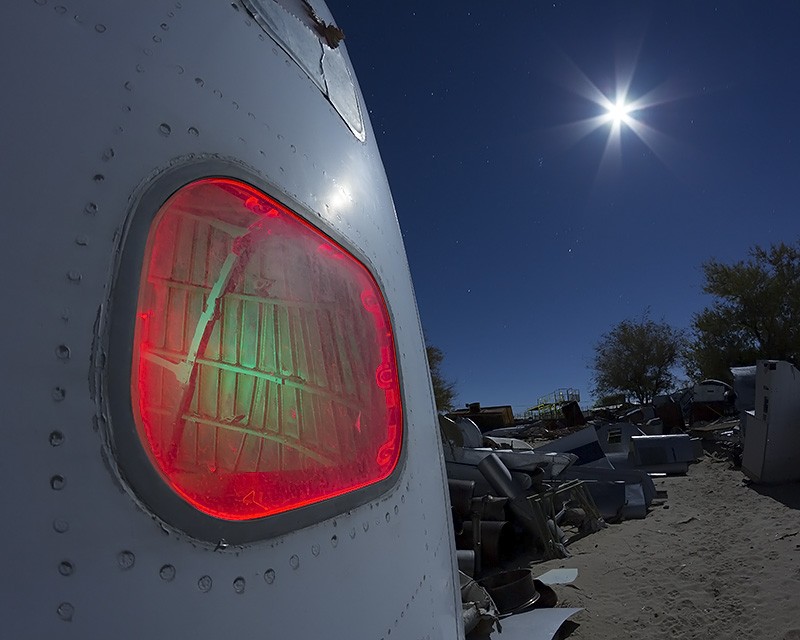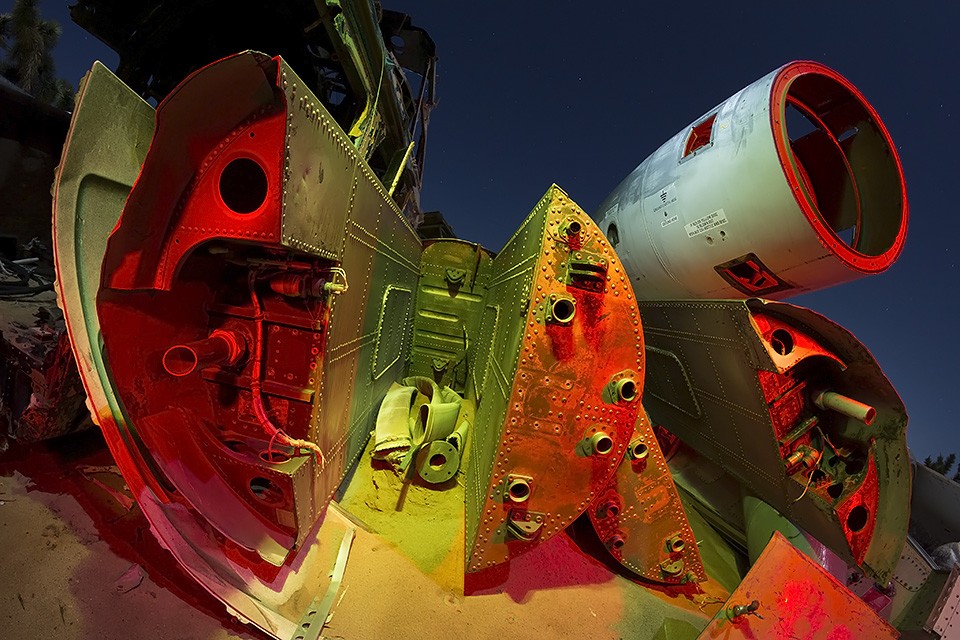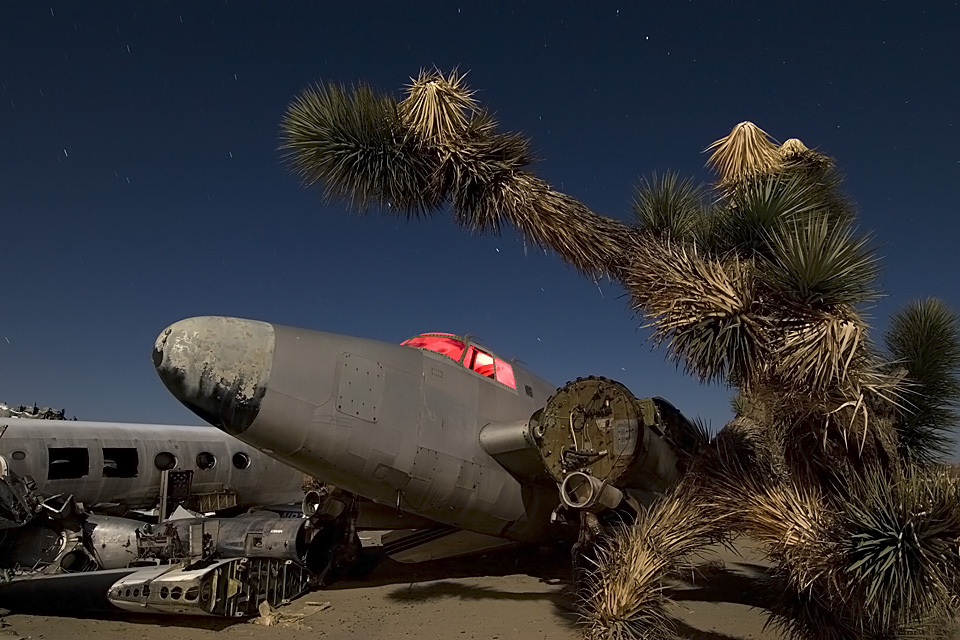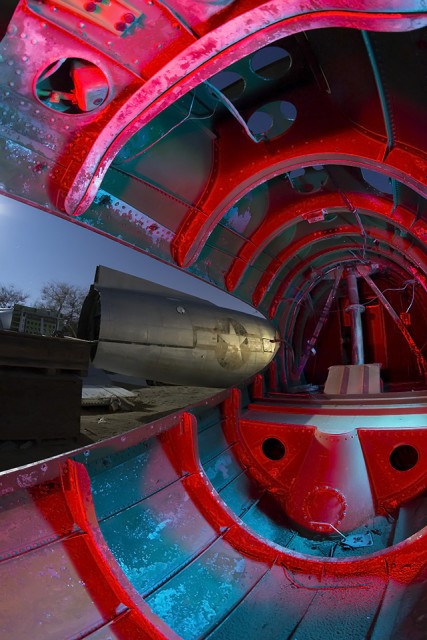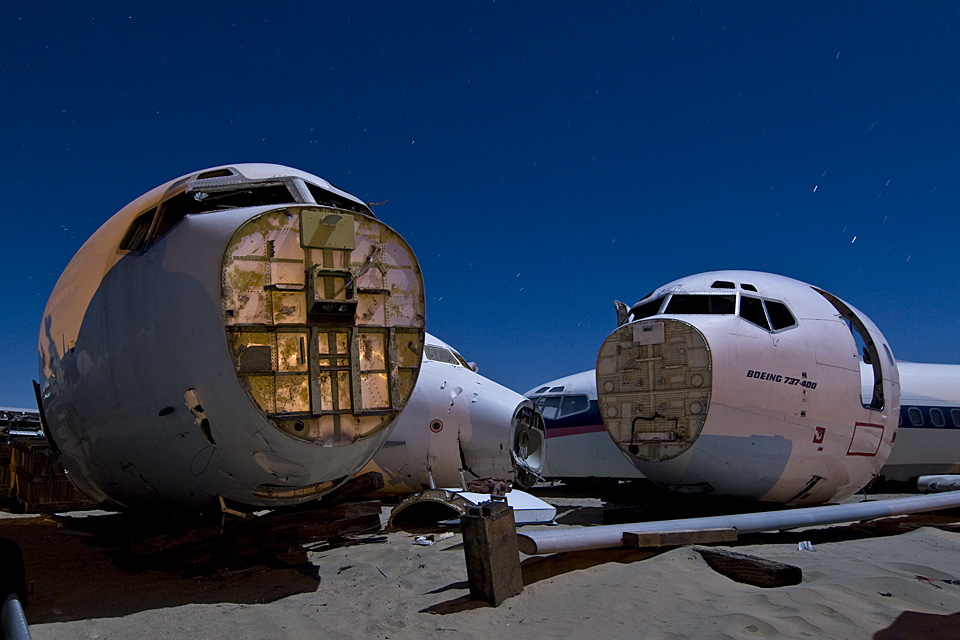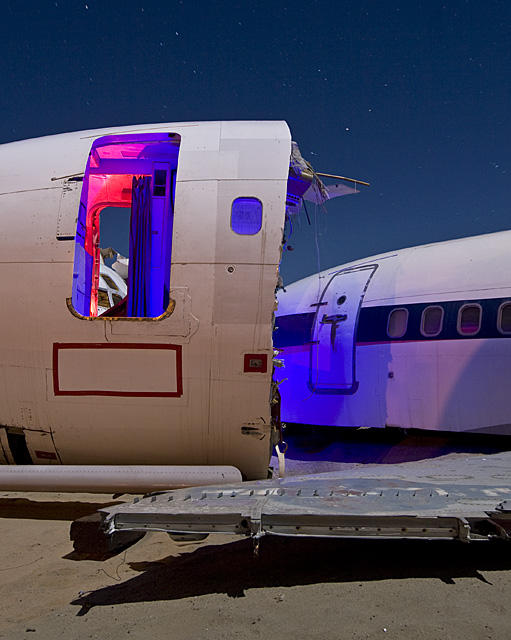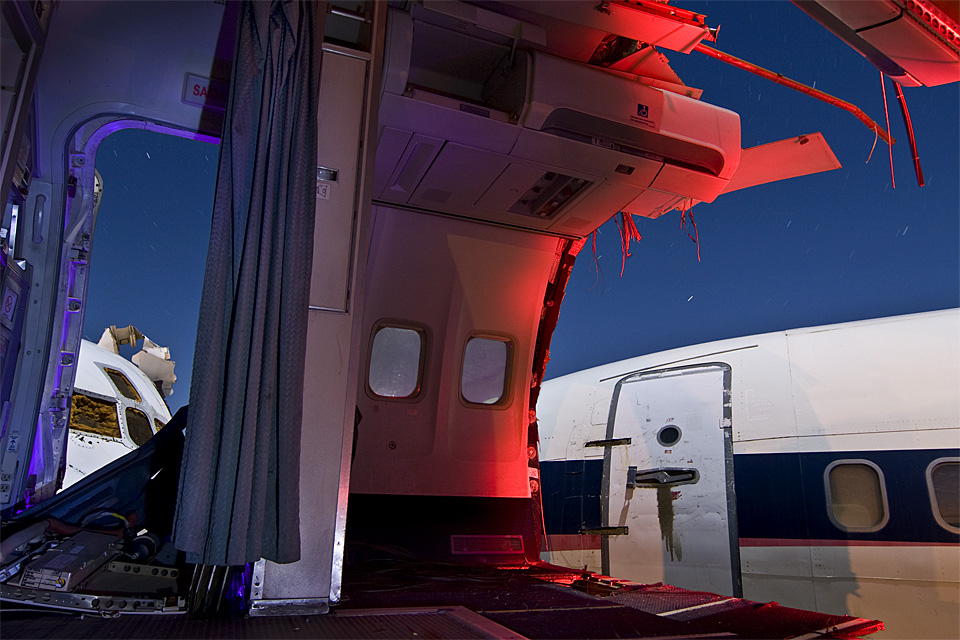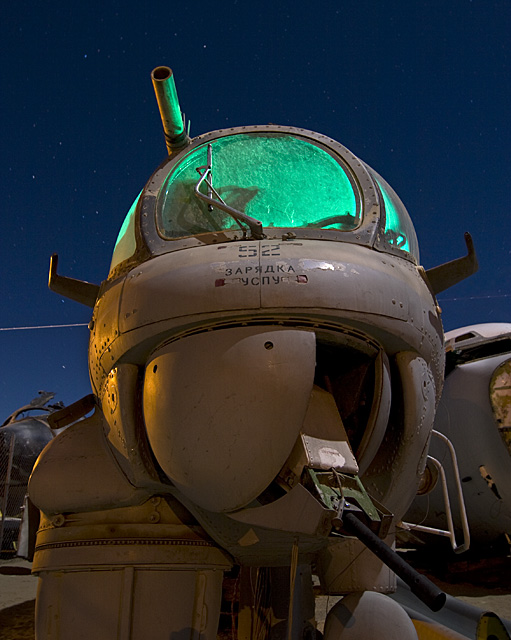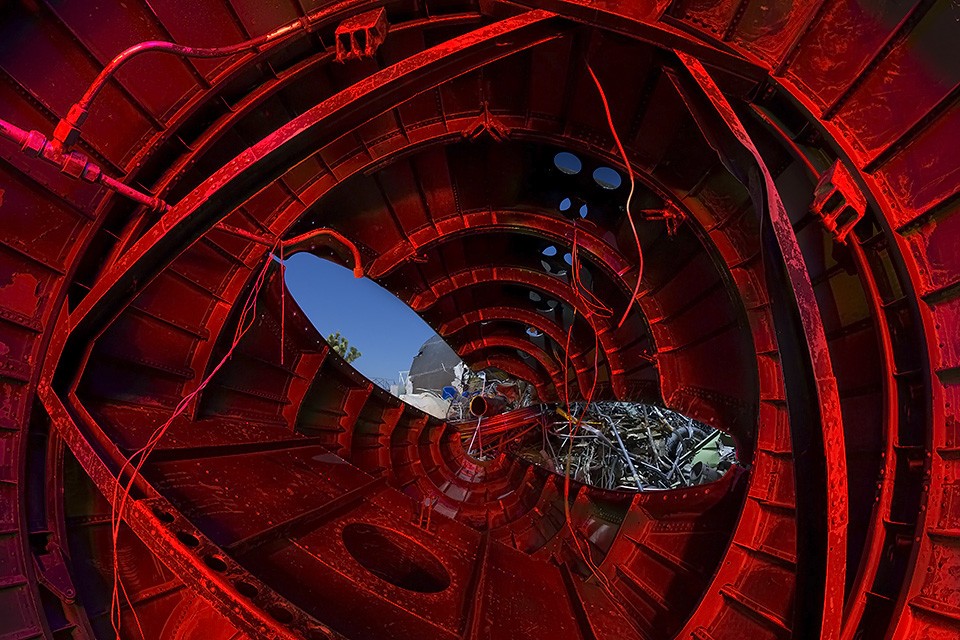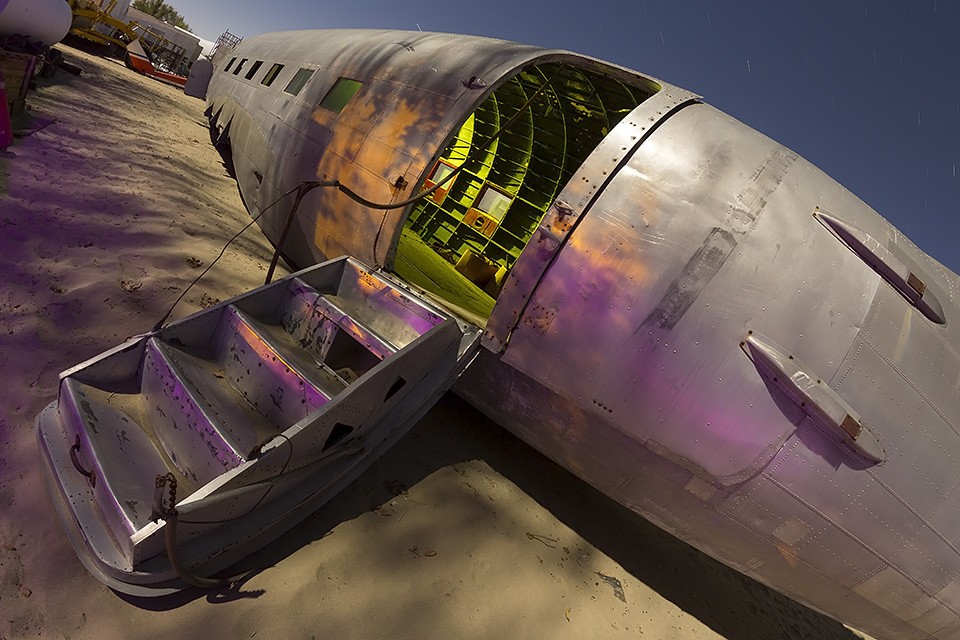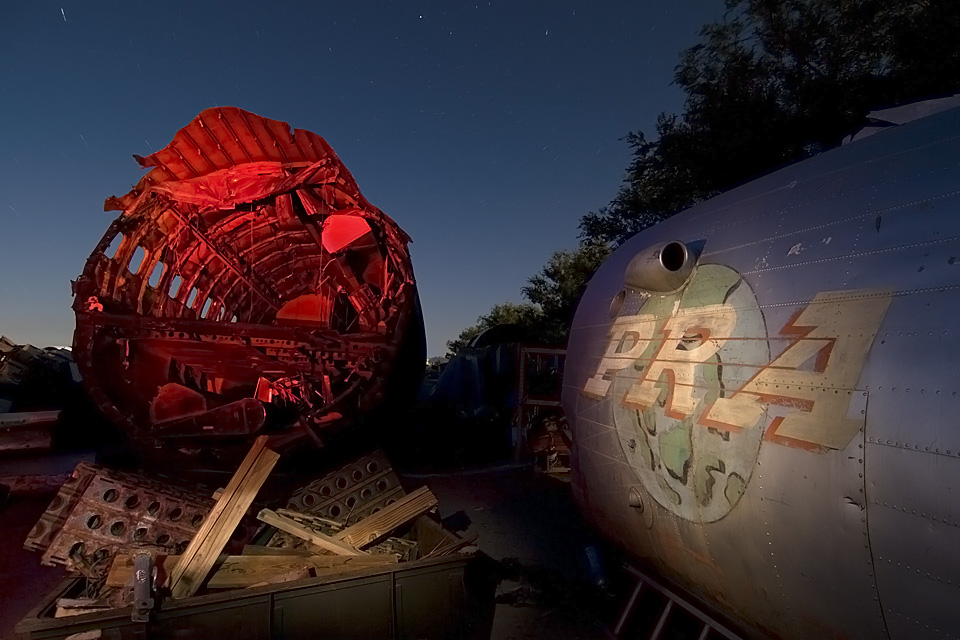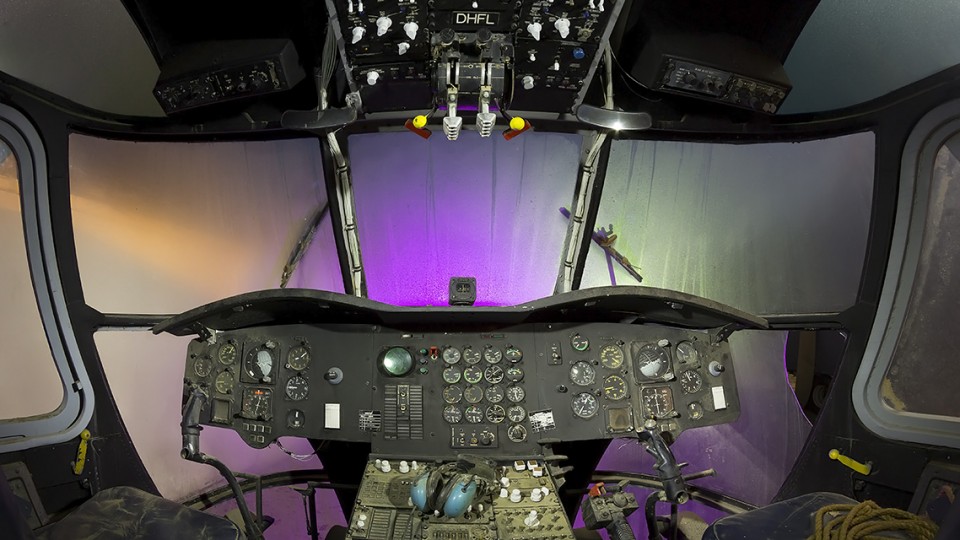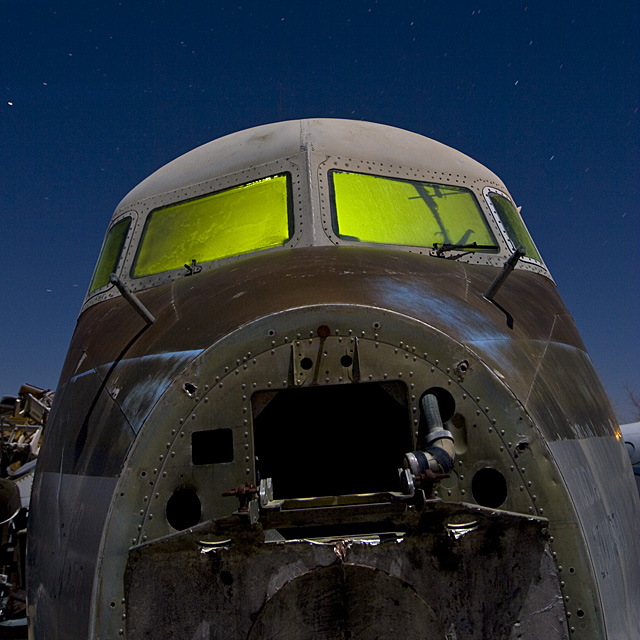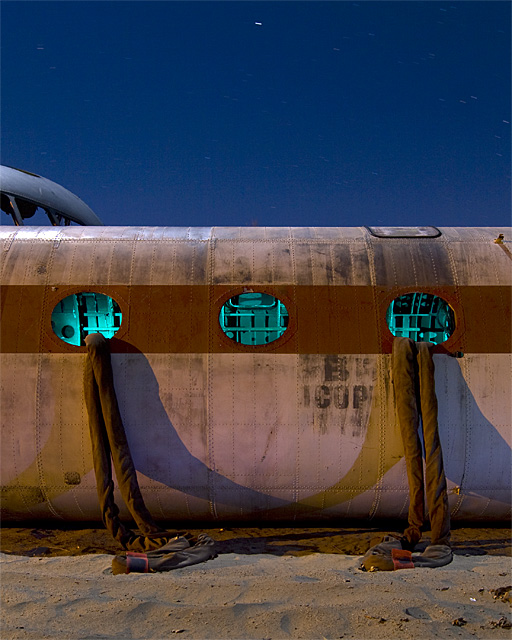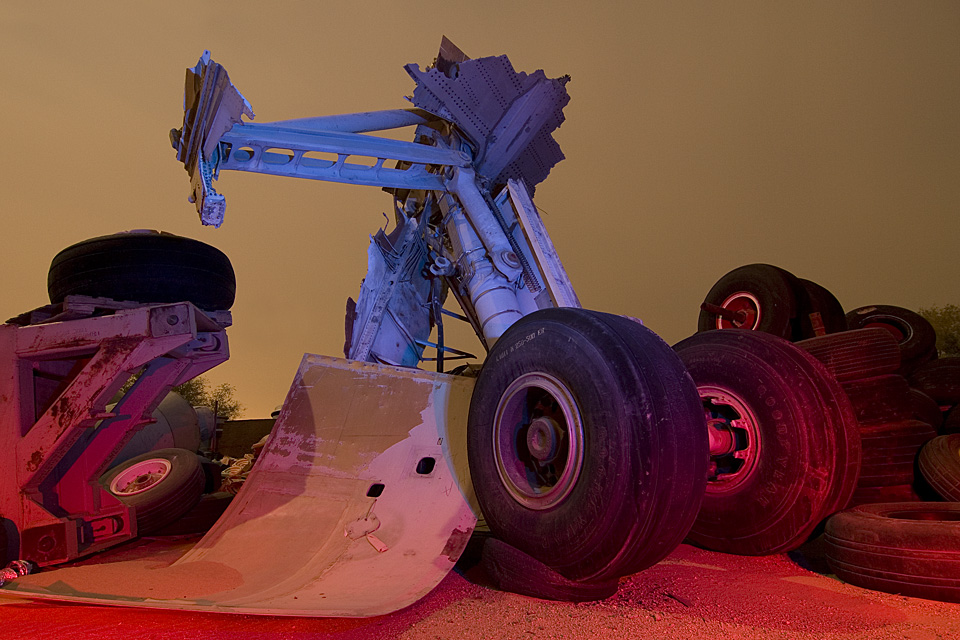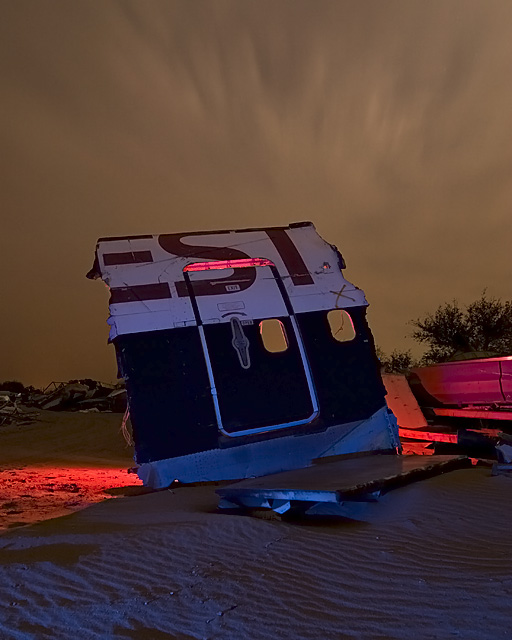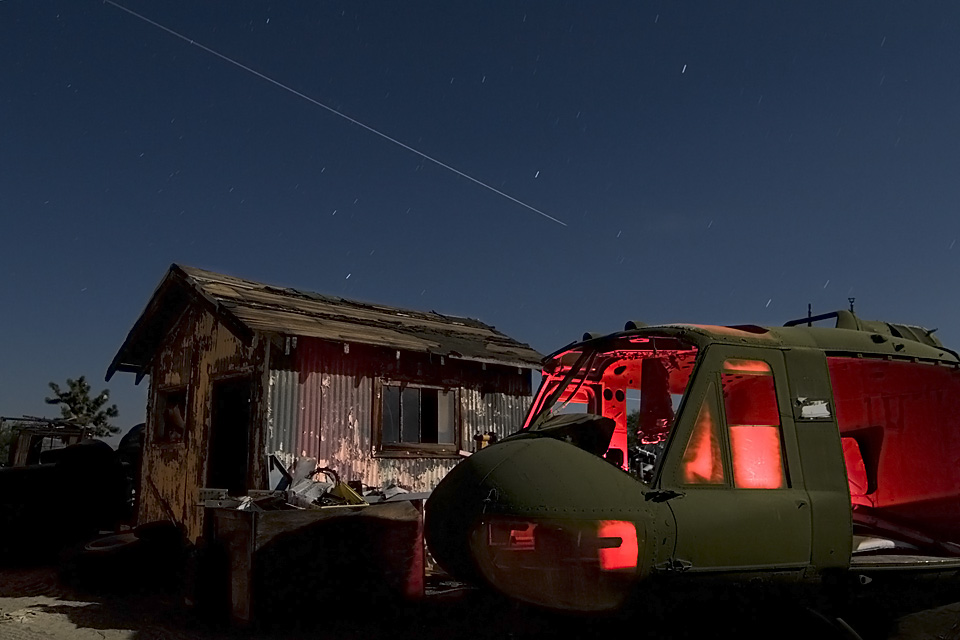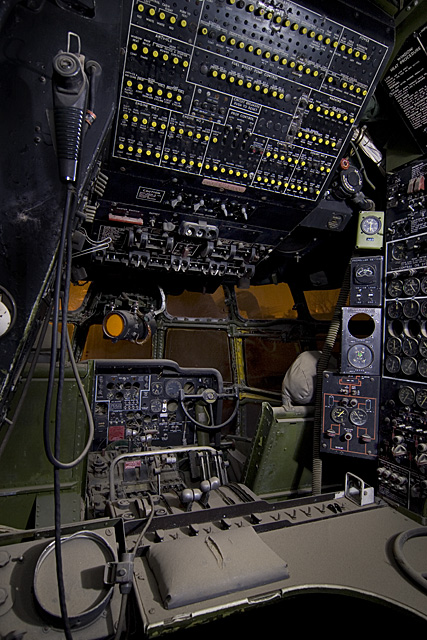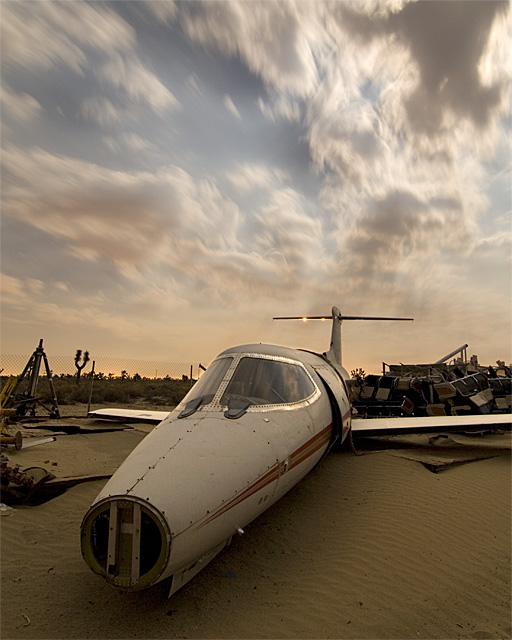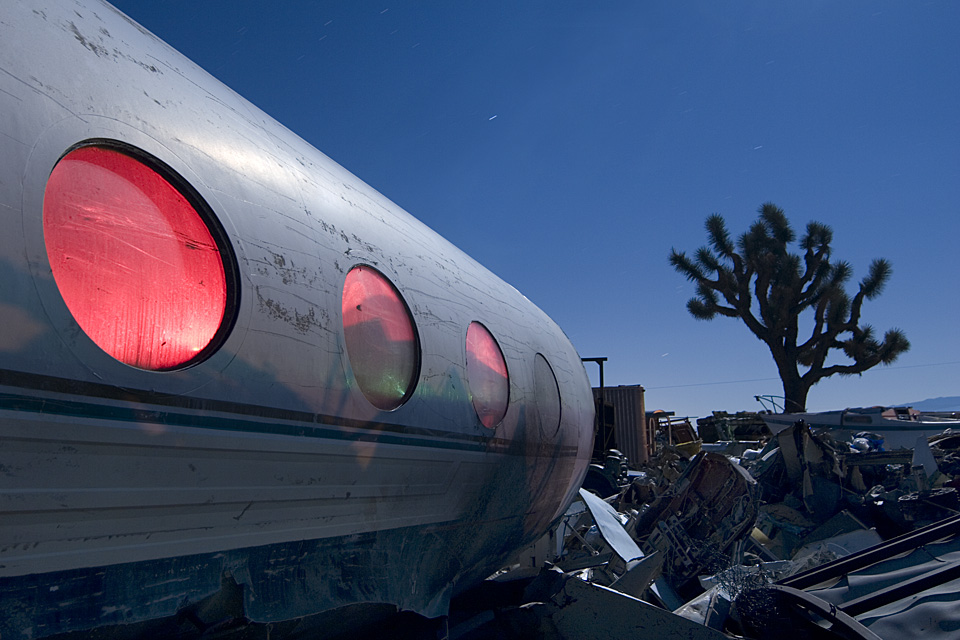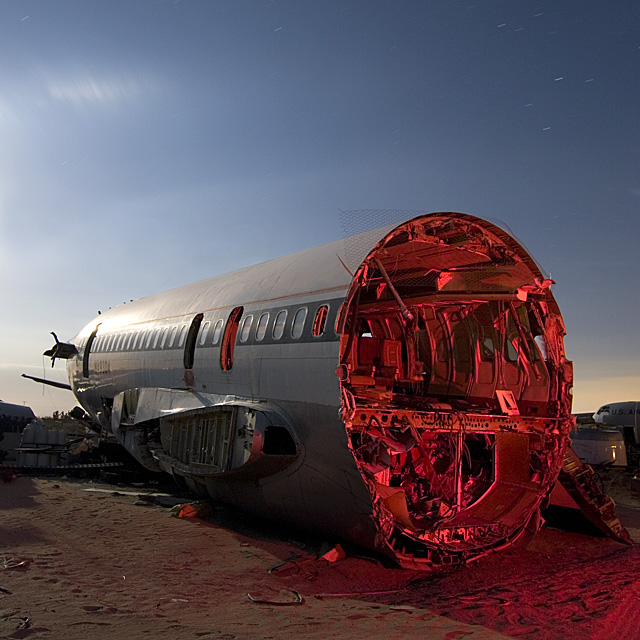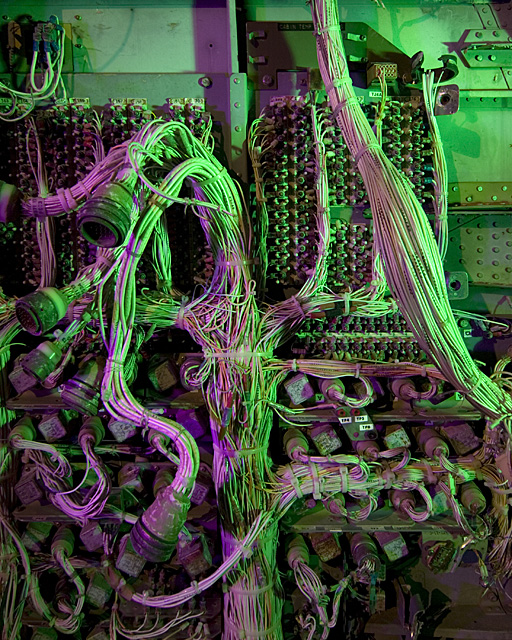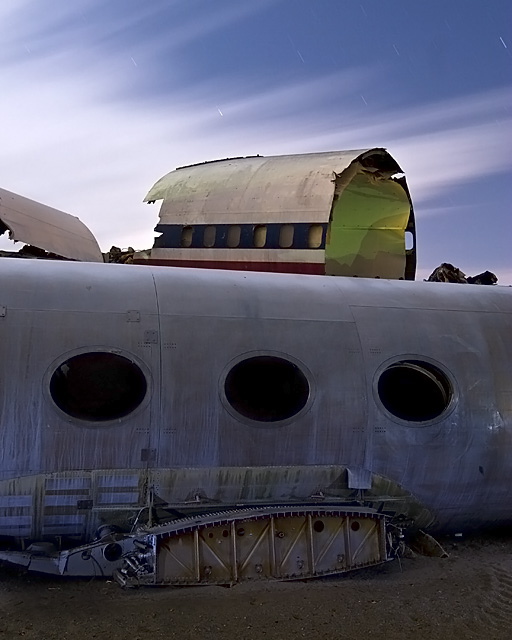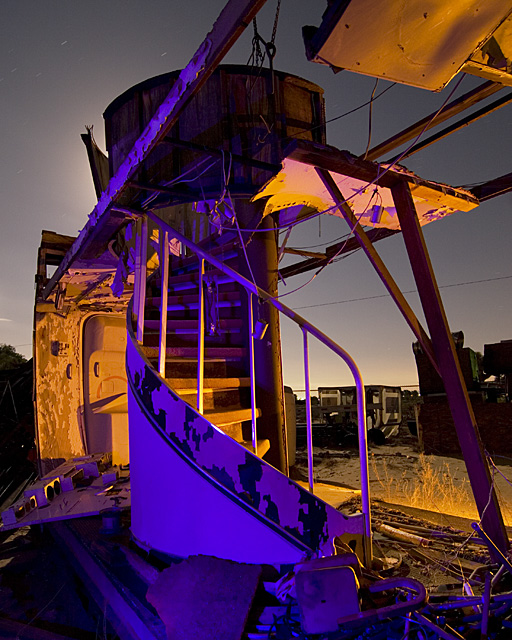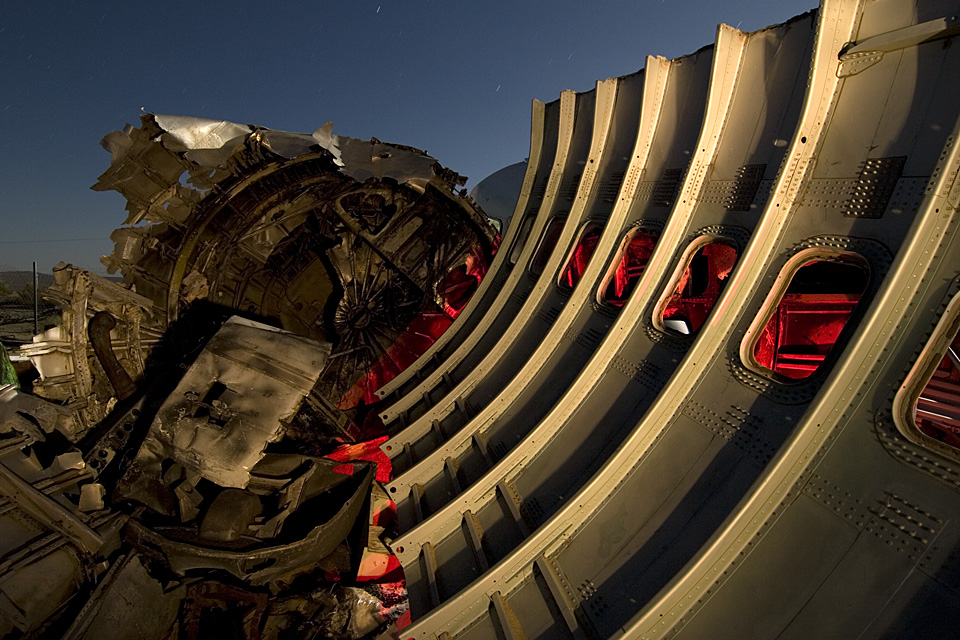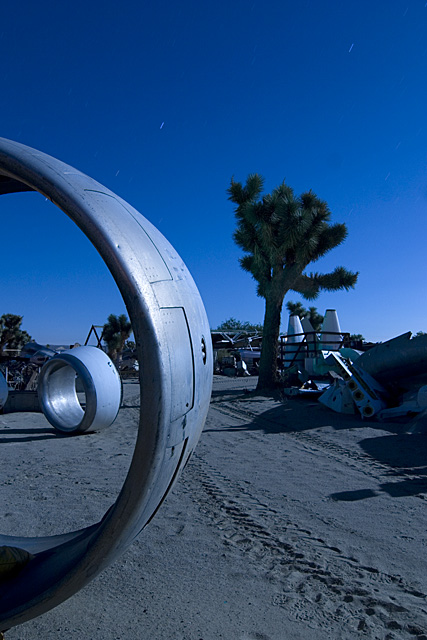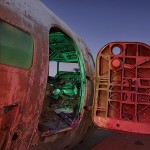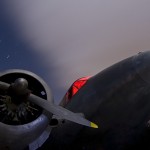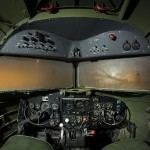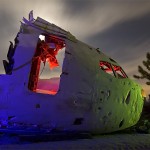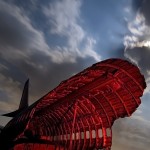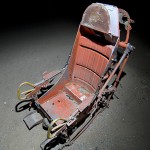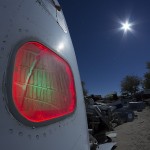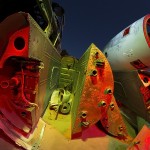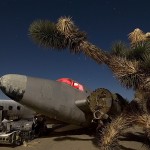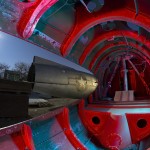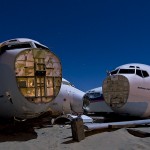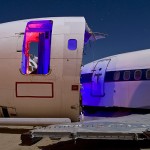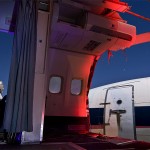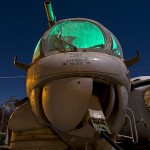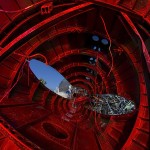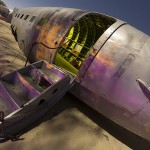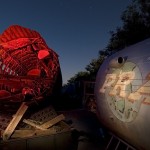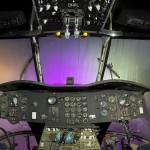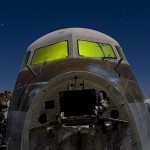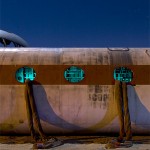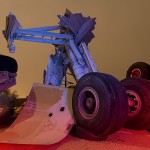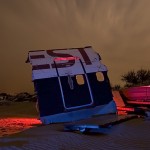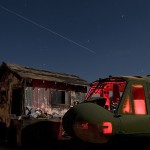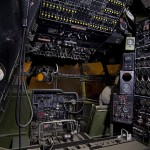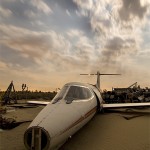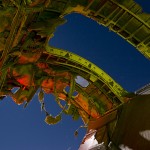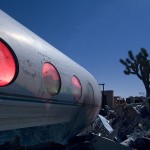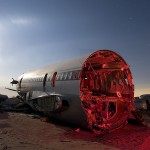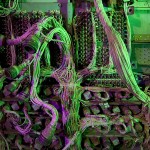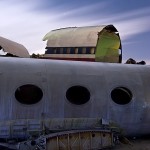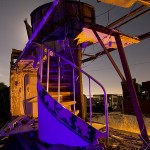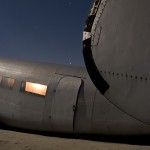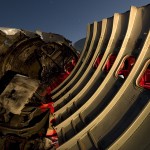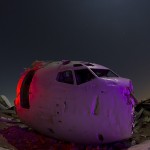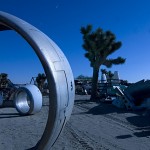(Updated March 2015)
El Mirage dry lake is a sleepy, windblown spot, lost in an isolated corner of Southern California’s high desert. Its six mile long patch of smooth, hard-packed surface make it a perfect natural runway. Consequently, it was used as an auxiliary airfield for nearby Victorville AFB during WWII. After the war it was turned over for civilian use and, aside from hot rodders using the lakebed for a few high-speed events each year, it has remained obscure and little used.
Today, this quiet backwater is the locale for Mark Thomson’s busy Aviation Warehouse, a provider of aviation-related material for the film and TV industry. Thomson started out flying charter and camera planes in the ’60s, eventually moving into buying and selling aircraft parts for film props. It started modestly; in the early ’70s he supplied a crashed airframe for the TV show Emergency!, and from this he forged lifelong contacts with Hollywood art directors and set designers. Before he knew it, Thomson had become the foremost supplier of aeronautical props to the television and movie industry.
In 1980, Thomson bought the airport at El Mirage and moved his operation from Hawthorne in the Los Angeles metro area to the desert, where land was cheap and he could spread out. Over the years, he has amassed a tremendous stockpile of worn-out and junk aircraft, from tiny Cessnas to wide-body airliners, as well as military transports and fighters. Many of these airframes are carefully broken and smashed to simulate fiery crash scenes, their fuselages torn and painted flat black. Thomson has supplied planes and parts for over three hundred movies and TV shows, including True Lies, Top Gear, War of the Worlds, Mission Impossible, and Con Air. If a movie has a plane crash in it, the airframe probably came from Aviation Warehouse.
Closed to the public, quiet and deserted, the sprawling Aviation Warehouse yard is an overwhelming sight. It’s easy to get lost wandering the winding sandy trails that separate the different types of planes and parts. One way to navigate the yard is to follow the landmarks—make a left at the mountain of airliner seats, walk past the row of massive landing gear, and you’ll find the Lockheed Harpoon, next to the garden of engine nacelles.
Thomson is well aware of the history and romance of his collection. The smashed and shredded debris is arranged around the twisted Joshua trees in strangely artistic piles. Thomson tries to keep it this way to help producers and art directors visualize the potential of his best pieces, but it’s a constant battle to keep the yard from slipping into jumbled anarchy. He clearly loves what he’s doing, creating a space that is part junkyard, part prop-house, and part museum.
Poking through this boneyard at night is an unforgettable experience. Thick with atmosphere, it’s a Disneyland for urban explorers and junk geeks. Most people view airliners as permanent, a constant in their lives. They prefer not to envision aircraft wearing out, but the reality is that they will eventually reach a point where they are destined for the scrap heap, just like cars or refrigerators. It’s an unsettling experience to see these icons of everyday technology smashed and broken, disappearing into the sand—an eerie reminder that time is short, and nothing is permanent.

